Thomas de Keyser
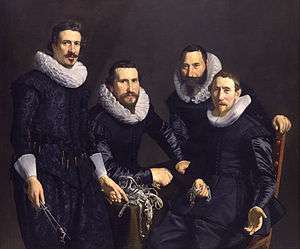
Thomas de Keyser (c. 1596–1667) was a Dutch painter and architect. He excelled as a portrait painter, and was the most in-demand portrait painter in the Netherlands until the 1630s, when Rembrandt eclipsed him in popularity. Rembrandt was influenced by his work, and many of de Keyser's paintings were later falsely attributed to Rembrandt.[1]
The Stedelijk Museum modern art museum in Amsterdam carries a statue of de Keyser on its facade. A street in Enschede is named for him.
A contemporary namesake of the painter was Thomas de Keyser (Utrecht, 1597–1651), an actor and nephew of Hendrick de Keyser.[2]
Work
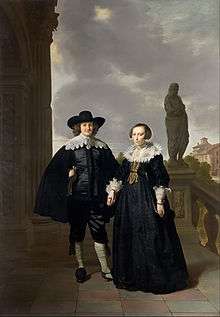
His portraiture is full of character and masterly in handling, and often distinguished by a rich golden glow of color and Rembrandtesque chiaroscuro. Some of his portraits are life-size, but the artist generally preferred to keep them on a considerably smaller scale, like the famous Four Amsterdam burgomasters assembled to receive Marie de Medici in 1638, now on display at the Mauritshuis museum in The Hague.
In addition to portraits, he also executed some historical and mythological pictures, such as the Theseus and Ariadne in the Amsterdam town hall, now the Royal Palace. De Keyser also worked as an architect. From 1662 until his death in 1667 he oversaw construction of the new Amsterdam town hall, now Royal Palace.[3]
The Rijksmuseum in Amsterdam has the largest collection of paintings by de Keyser. His work can also be seen at the Louvre in Paris, the Metropolitan Museum of Art in New York City, the Hermitage in Saint Petersburg and the National Gallery in London, among others.
Biography
De Keyser was born and died in Amsterdam. He was a son of the architect and sculptor Hendrik de Keyser. We have no definite knowledge of his training, and but scant information as to the course of his life. According to the Netherlands Institute for Art History, he was a pupil of Cornelis van der Voort.[4] The painters Aert Pietersz, Werner van den Valckert and Nicolaes Eliaszoon Pickenoy have been accredited by different authorities with having developed his talent, and sometimes his works have been confused with these painters, who painted portraits in similar styles.[4] The landscape painter Jacob Isaakszoon van Ruisdael painted a landscape as a background to one of his group portraits.[5]
In the 1640s, de Keyser received very few painting commissions, and was forced to seek income elsewhere. He owned a basalt business from 1640 until 1654, when he returned to painting.[3]
Gallery
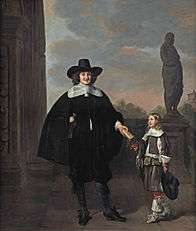 Frederick van Velthuysen and his son Diederik van Veldhuyzen (1651-1716)
Frederick van Velthuysen and his son Diederik van Veldhuyzen (1651-1716) Portrait of a Silversmith
Portrait of a Silversmith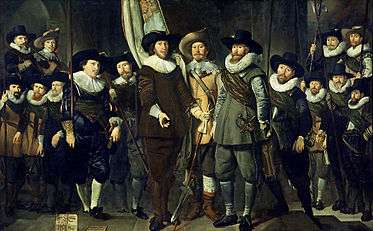 The militia company of captain Allaert Cloeck and lieutenant Lucas Jacobsz. Rotgans
The militia company of captain Allaert Cloeck and lieutenant Lucas Jacobsz. Rotgans Portrait of a woman
Portrait of a woman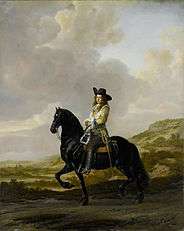 Pieter Schout
Pieter Schout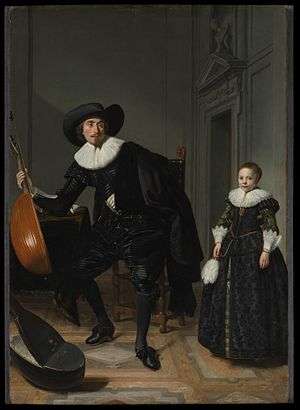 A Musician and His Daughter, 1629, Metropolitan Museum of Art.
A Musician and His Daughter, 1629, Metropolitan Museum of Art.
See also
Notes
- ↑ Veritus Archived 2007-02-20 at the Wayback Machine.
- ↑ Letterkundig woordenboek voor Noord en Zuid
- 1 2 Cultuurarchief
- 1 2 Thomas de Keyser at the Netherlands Institute for Art History
- ↑ Jacob Isaacksz van Ruisdael at the Netherlands Institute for Art History
References

External links
| Wikimedia Commons has media related to Thomas de Keyser. |
- Works and literature on Thomas de Keyser
- Artcyclopedia list of museums with works by Thomas de Keyser
- Works at WGA